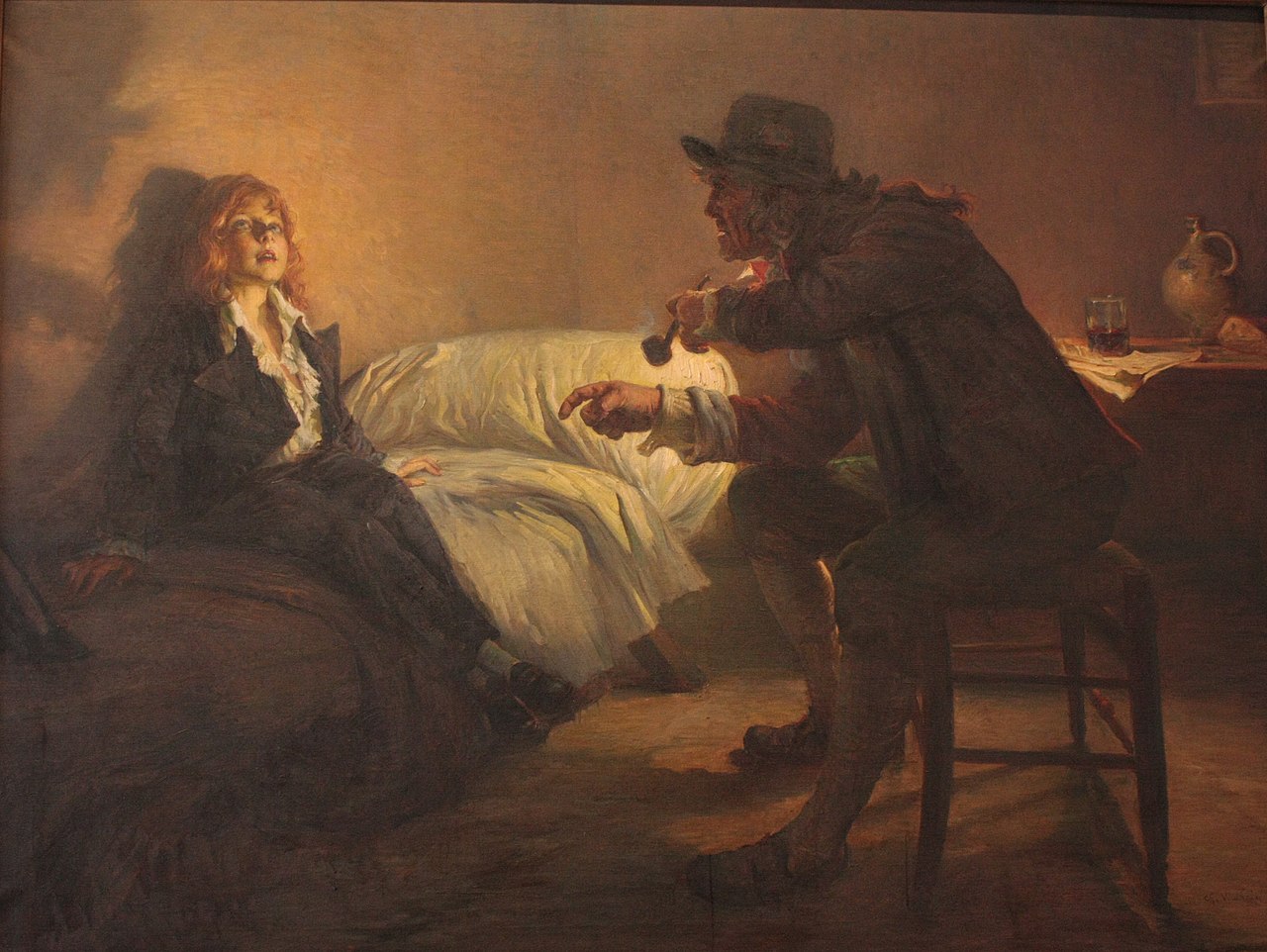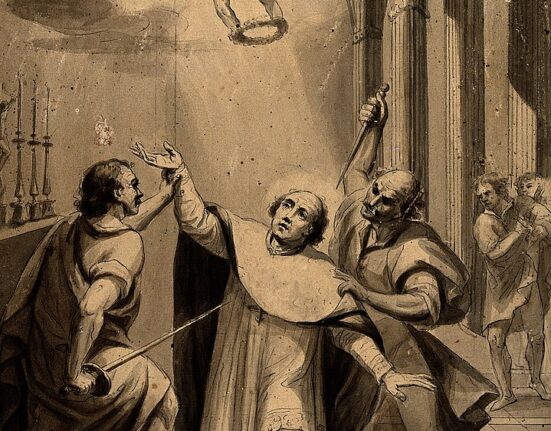In 1789, Louis XVI of France lost his grip upon the monarchy which he had inherited. Famine, indecisive decision-making, and unsuccessful policy reforms had created an environment in which the so-called “third estate,” the estate of the middle class commoners, struggled to survive. The mood in Europe, especially following the American Revolutionary War which France had supported, was generally beginning to favor the overthrow of absolute monarchy. Louis XVI tried desperately to adopt enlightenment principles in the hopes that the French monarchy could ride out this wave of revolutionary ideals and evolve with the times. Despite his efforts, tense negotiations throughout 1789 turned into outright civil war in the summer of that same year. For the next several years, Louis XVI reigned in the precarious position of “constitutional monarch” of a nation which increasingly scorned the notion of monarchy. Over the next several years, the tone of the revolution would become increasingly militant and radical until, in early 1793, Louis XVI was sentenced to death and executed via guillotine. The ensuing year would see the execution of thousands of royals, nobles, aristocrats, and perceived political enemies of France’s new revolutionary government. This government was extremely unstable and would turn its violence inwards for several more years until finally giving way to the reign of Napoleon Bonaparte. (1)
The Royal Family in Versailles
The bloody conflict to come was still several years away when Louis XVI and Marie Antionette welcomed their first child, a girl, into the royal family. Although Marie Therese Charlotte was not the male heir which the couple was under obligation to produce, her arrival was celebrated and dispelled rumors of infertility or incompetence in the royal marital bed. Following Marie Therese, Louis Joseph, Louis Charles, and Sophie Helene Beatrix completed the royal family. Now, with a male heir in Louis Joseph, a spare in Louis Charles, and two daughters for Marie Antionette to dote upon, the stability of the royal line might have seemed more certain than ever. In very little time, though, young Sophie would perish from suspected tuberculosis. She had not yet seen her first birthday when she died. Tragedy would then strike yet again when, at the age of seven, Louis Joseph would join his youngest sister in death. Bright and beloved, the young Dauphin of France had shown great promise but had been sickly throughout his short life and eventually succumbed to the same tuberculosis which had claimed Sophie’s life. (2)
The Dauphin of France

When Louis Joseph died, Louis Charles became the new Dauphin of France and heir of Louis XVI. At this time, Louis Charles was just four years old and had inherited a position which would bring nothing but hardship. It was 1789 when Louis Charles became Dauphin. During this same year, the royal family was removed from Versailles and placed in Tuileries Palace in Paris. There, they remained together under constant supervision by revolutionaries. In 1791, as hostilities grew and the danger to their lives became ever more apparent, the royal family attempted to flee to royalist territory and seek the protection of Austria, Marie Antionette’s country of origin. Their flight was ultimately thwarted when the king was recognized. They were returned to Paris where they would remain until their official arrests in 1792. (3)
The Guillotine
From 1792 onwards, Louis Charles and his family were kept in squalid conditions in the Temple prison. In January of 1793, Louis Charles assumed the official title of Louis XVII of France when his father, Louis XVI, was publicly executed via the guillotine. All of the remaining bodies which acknowledged the newly deposed monarchy considered young Louis Charles to be France’s king at this point. Louis Charles is said to have been kept in the dark about this matter and was apparently unaware that his father had been killed.
Shortly after this, Louis Charles was separated from his mother who was, herself, set to stand trial. Louis Charles was passed into the care of a shoemaker and revolutionary named Antoine Simon. Simon looked after the child within the Temple prison and is accused by modern historians of both neglecting and abusing the seven year-old “king.” Some sources dispute this and state that Simon took this duty quite seriously. In any case, under Antione Simon’s care, Louis Charles was manipulated into testifying against Marie Antionette. (4)

In October of 1793, Marie Antionette was executed via the guillotine. It is said that prior to her execution, she spent entire days in captivity desperately attempting to catch a glimpse of her remaining son. Under Simon’s care, though, the young king had been made to accuse his mother of molestation and incest. Modern historians find no basis in these claims, but they were instrumental in securing her conviction and execution. (5)
Imposters
Several men have claimed that, during this period, Louis Charles was smuggled out of captivity and spirited away to parts unknown. Individuals who have claimed to be the “Lost Dauphin” have ranged from a Native American reverend in the United States to a German clockmaker whose convoluted escape plot has become the stuff of legend. Many individuals on either side of the political spectrum believed that the Dauphin had escaped. Previous escape attempts as well as outspoken determination from royalists who sought to free the boy have muddied the waters and lent some small measure of credibility to his supposed escape.
The aforementioned clockmaker, Karl Wilhelm Naundorff, was even allowed to pass down the royal “de Bourbon” name to his son. When Naundorff died, his tomb was inscribed with the name “Louis XVII,” lending further credibility to the theory that France’s final king had achieved a daring escape from the clutches of the Revolution.
The Heart of a King
In actuality, Louis XVII would never leave the Temple prison. He would spend the remainder of his life surrounded by filth until he eventually grew ill, likely with the very same tuberculosis which had killed two of his siblings. Louis Charles was ten. The doctor who performed his autopsy is alleged to have been shocked by the physical abuse and neglect which was evident upon the young king’s body. (6)
The heart of young Louis Charles was removed and hidden away for a number of years. Burial of the heart apart from the body was not an uncommon practice amongst European royalty, however Louis Charles was not afforded a royal burial by his captors. For two centuries, the preserved heart of Louis Charles changed hands a number of times before being interred with the remains of France’s royalty in the Basilica of St. Denis in Paris. In 1999 the heart was exhumed for testing and it was concluded that it was indeed the heart of Louis Charles based upon remaining DNA from several family members on his mother’s side, including hairs from Marie Antionette herself. In 2004, the heart was given a final ceremonial burial alongside Louis Charles’ parents. (7)
In 2014, a study was published which reintroduced the idea that Naundorff could be the “Lost Dauphin” based upon reported similarities between DNA extracted from one of his humerus bones and DNA from confirmed descendants of Marie Antionette’s Habsburg family lineage. This study has been disputed and the evidence linking the preserved heart to Louis Charles is far more substantial than any possible connection between the royal line and Naundorff’s humerus. (8)
Final Thoughts
The mistreatment and death of the young king is an often forgotten chapter in the lurid history of the French monarchy’s downfall. While Louis XVII may never have assumed the role of monarch, his place in history as the last king of France is a stark reminder of the injustices which befall even the most fortunate children during periods of war.






